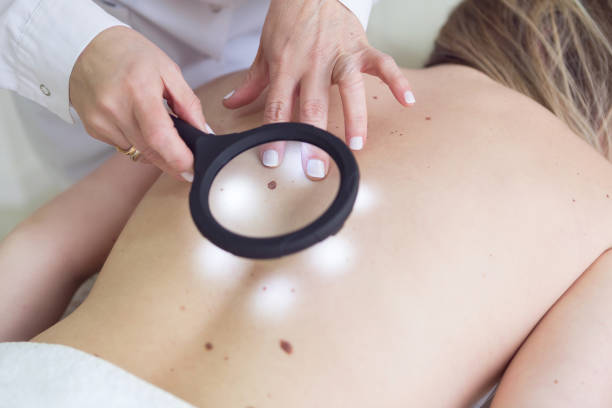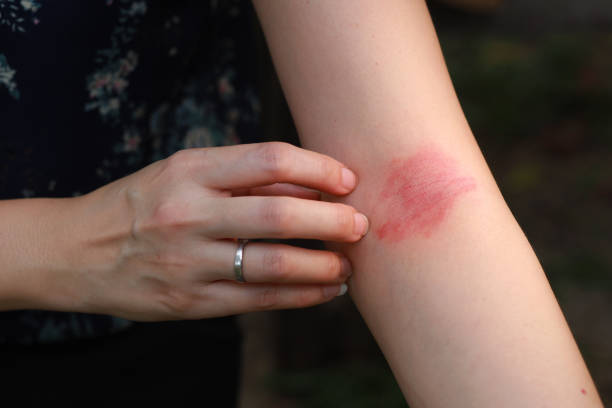In the hum of daily life, there are battles being fought silently—within bodies that seem outwardly normal. Some people go to work, laugh with their children, cook dinner, or walk the dog, completely unaware that something dangerous is brewing just beneath the surface. It doesn’t come with an ache or a fever, and often, it offers no warning signs at all. Yet, this invisible burden tightens its grip, day by day, year by year.
That burden is hypertension—more commonly known as high blood pressure. It is one of the world’s most common medical conditions and one of the deadliest. Globally, more than 1.2 billion people live with it, many of them undiagnosed. It’s responsible for heart attacks, strokes, kidney disease, vision loss, and more. It is, quite literally, a pressure we carry—silently, dangerously, and too often, unknowingly.
But knowledge is power. In this journey through the science and emotion of hypertension, we’ll uncover not just what it is, but why it matters, how it’s detected, and most importantly, what we can do to fight back.
What Is Hypertension?
To understand hypertension, we must begin with the heart—the tireless engine that pumps life through our veins. With every beat, the heart pushes blood through the vast network of arteries, delivering oxygen and nutrients to every cell. Blood pressure is the force of that blood against the walls of the arteries. It’s a normal and necessary part of human physiology.
But when that pressure becomes too high, it starts to do damage. High blood pressure means the heart has to work harder to pump, and the arteries endure constant strain. Over time, this leads to scarring, narrowing, and stiffening of blood vessels, increasing the risk of serious, often deadly complications.
Blood pressure is measured using two numbers:
- Systolic pressure (the top number) indicates the force when the heart contracts.
- Diastolic pressure (the bottom number) shows the force when the heart rests between beats.
According to most health guidelines, including those from the American Heart Association and World Health Organization:
- Normal blood pressure is under 120/80 mm Hg.
- Elevated blood pressure is 120–129 systolic and under 80 diastolic.
- Stage 1 hypertension is 130–139 systolic or 80–89 diastolic.
- Stage 2 hypertension is 140+ systolic or 90+ diastolic.
Even small elevations matter. Every 20-point increase in systolic pressure doubles the risk of heart disease and stroke.
The Silent Killer: Why Hypertension Is So Dangerous
Why is hypertension often called the “silent killer”? Because it can damage vital organs like the heart, brain, kidneys, and eyes without producing a single noticeable symptom. You may feel perfectly fine while your arteries are hardening, your heart is thickening, and your kidneys are losing their ability to filter blood.
Uncontrolled high blood pressure is a leading cause of:
- Heart attacks and heart failure
- Strokes
- Chronic kidney disease
- Aneurysms (dangerous ballooning of blood vessels)
- Vision loss due to damage to retinal arteries
- Cognitive decline and dementia
It’s a slow, silent process—but one with enormous consequences. Understanding what causes it is the first step in dismantling its grip.
The Complex Causes of High Blood Pressure
Hypertension is not a one-size-fits-all disease. Its causes are as varied as the people it affects. Broadly, hypertension falls into two categories:
Primary (Essential) Hypertension
In over 90% of cases, no specific underlying cause can be identified. This is known as primary hypertension. It develops gradually, often over decades, and is influenced by a mix of genetic, lifestyle, and environmental factors.
- Genetics: If your parents or siblings have high blood pressure, you’re more likely to develop it too.
- Age: Blood pressure tends to rise with age as arteries lose flexibility.
- Obesity: Extra weight increases the strain on the heart and blood vessels.
- Diet: High salt intake, low potassium, and poor nutrition all contribute.
- Physical inactivity: A sedentary lifestyle weakens the cardiovascular system.
- Stress: Chronic stress can contribute to temporary spikes that, over time, can lead to lasting hypertension.
- Alcohol and tobacco use: Both can raise blood pressure and damage artery walls.
Secondary Hypertension
In about 5–10% of cases, high blood pressure is caused by another medical condition or medication. This is called secondary hypertension, and it often appears suddenly and severely.
- Kidney disease: Impaired kidneys struggle to regulate blood pressure.
- Adrenal gland disorders: Conditions like Cushing’s syndrome or pheochromocytoma affect hormone levels.
- Thyroid problems: Overactive or underactive thyroids can disturb blood pressure control.
- Obstructive sleep apnea: Causes repeated drops in oxygen, triggering blood pressure spikes.
- Medications: Birth control pills, NSAIDs, decongestants, and certain antidepressants can increase blood pressure.
Uncovering the root cause, when there is one, is vital to effective treatment.
How Does It Feel? The Symptoms of Hypertension
For many people, it doesn’t feel like anything at all. That’s the danger. Most individuals with high blood pressure will go years without noticing a problem—until it’s too late.
But in some cases, particularly with severe or rapidly rising hypertension, symptoms may appear:
- Headaches, especially in the morning
- Blurred or double vision
- Nosebleeds
- Shortness of breath
- Dizziness or lightheadedness
- Palpitations (irregular or forceful heartbeat)
- Fatigue or confusion
These symptoms are more likely in what’s known as hypertensive crisis, where blood pressure spikes above 180/120 mm Hg and may result in organ damage. This is a medical emergency.
Still, it’s important to remember: absence of symptoms does not mean absence of disease. Regular screening is the only way to know for sure.
The Power of Measurement: Testing for Hypertension
Blood pressure measurement is quick, painless, and crucial. It can be done in a doctor’s office, at a pharmacy, or at home using an automated cuff.
How Is It Measured?
A cuff is placed around your upper arm, inflated, and slowly deflated while the machine (or health professional using a stethoscope) listens to blood flow and calculates your systolic and diastolic pressures.
Best Practices for Accurate Measurement:
- Rest for 5 minutes before measuring
- Sit with back supported and feet flat
- Don’t talk during measurement
- Avoid caffeine, exercise, or smoking 30 minutes beforehand
Confirming a Diagnosis
One elevated reading doesn’t mean you have hypertension. Diagnosis usually requires:
- Multiple readings on different days
- Measurements at home and in the clinic
- 24-hour ambulatory monitoring (in some cases) for a fuller picture
Once diagnosed, your doctor may also order tests to check for complications or underlying causes:
- Blood tests (to check kidney function, cholesterol, sugar)
- Urine analysis
- Electrocardiogram (ECG) or echocardiogram
- Eye exam
- Imaging tests (ultrasound, CT, or MRI in special cases)
Fighting Back: The Treatment of High Blood Pressure
The good news is that hypertension is treatable—and often preventable. Treatment may involve lifestyle changes, medications, or a combination of both, tailored to the individual.
Lifestyle Changes: The First Line of Defense
For many people, these changes can significantly reduce or even normalize blood pressure:
- Weight loss: Losing just 5–10% of body weight can lower blood pressure dramatically.
- Healthy diet: The DASH diet (Dietary Approaches to Stop Hypertension) emphasizes fruits, vegetables, whole grains, lean protein, and low sodium.
- Salt reduction: Aim for under 2,300 mg/day, or ideally 1,500 mg/day.
- Regular exercise: 30 minutes of moderate activity 5 days a week improves cardiovascular health.
- Limiting alcohol: No more than one drink per day for women, two for men.
- Quitting smoking: Tobacco not only raises blood pressure but accelerates arterial damage.
- Managing stress: Techniques like mindfulness, therapy, deep breathing, and hobbies matter.
Medication: When Lifestyle Isn’t Enough
If lifestyle changes don’t bring blood pressure to target levels, or if risk is high due to age or existing conditions, medication is essential. Several classes of drugs are commonly used:
- Diuretics: Help the kidneys eliminate sodium and water, lowering blood volume.
- ACE inhibitors: Relax blood vessels by blocking hormones that constrict them.
- Angiotensin II receptor blockers (ARBs): Similar to ACE inhibitors, but work differently.
- Calcium channel blockers: Relax blood vessel muscles and slow heart rate.
- Beta blockers: Reduce the heart’s workload by slowing its rate.
- Alpha blockers, vasodilators, and centrally acting agents may be added if needed.
Often, more than one medication is used to achieve optimal control with minimal side effects. Finding the right combination takes time and careful monitoring.
Hypertension and the Human Heart
Treating high blood pressure isn’t just about numbers on a screen. It’s about preserving moments—the breathless joy of a grandchild’s hug, the laughter of a shared meal, the silent peace of a sunset walk. Hypertension threatens these treasures by stealing health slowly and without warning.
But when we confront it, we reclaim control. Each small choice—a salad instead of fries, a walk instead of the couch, a deep breath instead of a cigarette—is a step toward freedom.
The Global Fight
Hypertension isn’t just a personal battle—it’s a public health crisis. In low- and middle-income countries, access to screening and medication is often limited. Education gaps and healthcare inequality allow the disease to go unchecked.
The World Health Organization, along with national health bodies, is working to improve access, awareness, and policy changes. But progress is slow, and individuals must become advocates—for themselves, and for their communities.
A Lifelong Journey
Managing blood pressure isn’t a one-time fix—it’s a lifelong journey. It requires vigilance, partnership with healthcare providers, and emotional resilience. But the rewards are profound: fewer strokes, longer life, and better quality of life.
Hypertension may be silent, but its consequences shout loudly. The time to listen is now.






